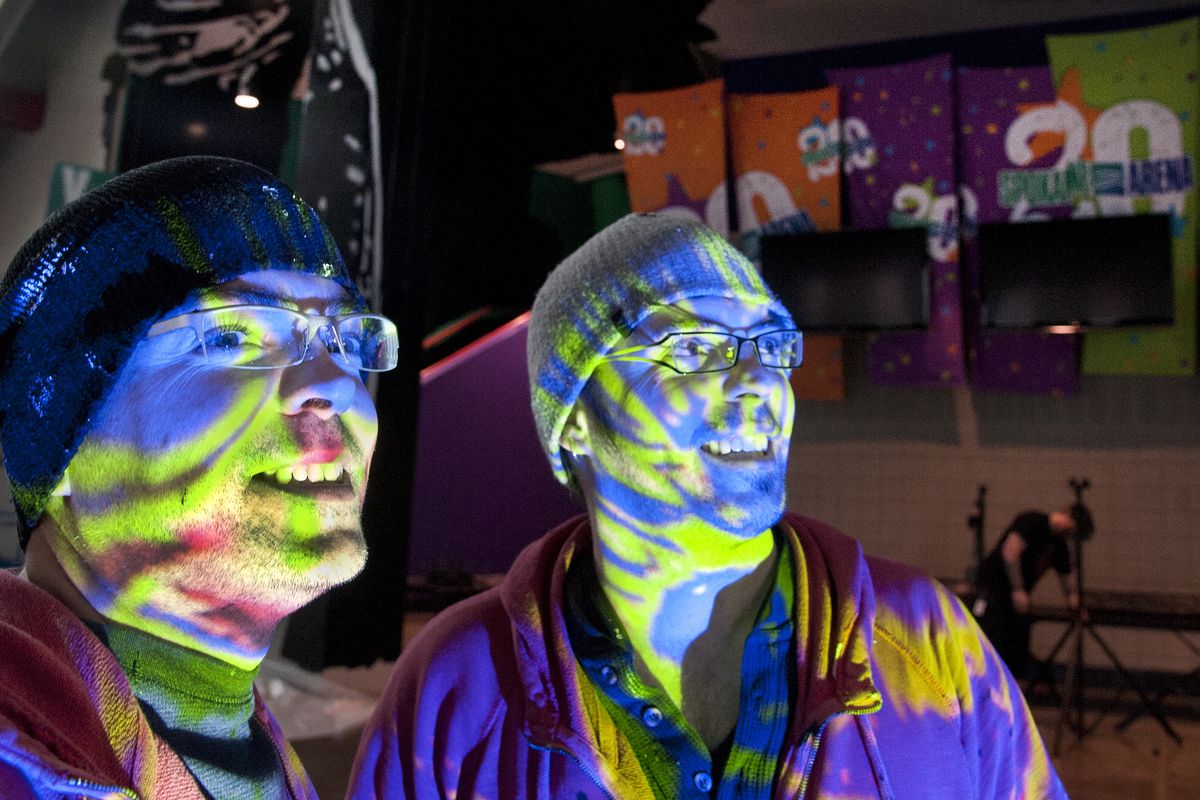Celebration, improvements in store for Spokane Arena’s 20th year

When the Spokane Veterans Memorial Arena opened in 1995, the owner of the Spokane Chiefs declared it to be the finest facility of its kind in any small city in America.
“I’ve seen a lot of facilities,” team owner Bobby Brett said back then.
Today, the Arena staff is getting ready for a 20th anniversary celebration, which will include a huge new mural, a new veterans’ memorial and improvements to the venue’s hospitality offerings.
An open house to celebrate the 20 years is planned for September, prior to the Chiefs’ season opener.
More than 14 million people have crossed through Arena turnstiles since it opened, and by the end of the year, the number should approach 15 million.
Concerts, sporting events, civic fundraisers, religious gatherings – all have been held there.
Olympic figure skaters competed in the Arena in 2007 and 2010.
“We’ve had a great run of a lot of different acts,” said Matt Gibson, Arena general manager.
Photo posters of some of the Arena’s top acts – Eddie Vedder, Carrie Underwood, Garth Brooks, Elton John, Cher, Bon Jovi – have been hung around the facility in honor of the 20th.
Kevin Twohig, chief executive officer for the Spokane Public Facilities District – the owner of the facility – said the Arena has operated at a profit in all but two years of its existence. It broke even in 1996, its first full year of operation, and lost money in 1997. Since then, the facility has been in the black.
It seats between 9,000 and 12,700, depending on the event.
Last year, the Arena grossed $5.9 million with expenses of about $4.4 million, leaving a net profit of $1.47 million. More than 650,000 attended events there.
Arena managers say the spending extends well beyond the Arena, bringing money from visitors for lodging, dining and shopping.
Twohig said the original design and construction has proved to be durable, noting that the Arena is now half as old as the 8,500-seat former Spokane Coliseum that it replaced.
Brothers Todd and Cain Benson are working on a huge new mural inside the Arena concourse entry. They won a $50,000 contract in a competition with two other finalists.
In another major project during the anniversary year, the Spokane Arts Fund, along with the Gold Star Families, the city and Public Facilities District are seeking an artist or artist team to develop a memorial honoring fallen veterans since 9/11.
The memorial is expected to be placed at the southeast portion of the Arena grounds near Mallon Avenue and Howard Street.
The Arena is managed through the Public Facilities District, a publicly governed agency that collects tax money to pay for the original investment. Twohig said the Arena’s debt will be retired by 2017.
The district also owns the Convention Center complex, which is being expanded through a voter-approved extension of PFD taxes, as well as the INB Performing Arts Center, which dates to Expo ’74.
During the two decades of operation, some of the biggest changes at the Arena involve food and drink. “It’s not enough to get a hot dog or hamburger,” Twohig said.
Now, guests can choose among several food and beverage spots, including the new Red Tail at the Arena, located on the west concourse landing below the video wall. The Red Tail was opened under sponsorship of the Coeur d’Alene Casino.
Across the concourse at Absolut Grill is a menu with meatloaf, salmon and a pretzel burger for around $10 each.
The former Arena Club, now the Numerica Club, has undergone interior updates over the years.
Also added to the concourse is a Spokane Area Veterans Remembered display, to go along with the ever-expanding sports Hall of Fame.
“This is something we are really proud of,” Twohig said of the veterans display.
Twohig also said it is nearly time to purchase a new LED video wall.
To build the Arena, ALSC Architects of Spokane teamed up with Ellerbe Beckett, a national firm with expertise in Arena design. Garco Construction of Spokane won the contract to build the $44.8 million arena, a job that took nearly three years.
It took even longer to create a functioning PFD with taxing authority through legislation. Voters rejected a bond issue in 1985 and again in 1990. The PFD the next year got a 0.1 percent sales tax authority from lawmakers and won full funding in the next balloting that September. Then, in 2012, voters approved an extension of the tax, mostly to pay for expansion of the Convention Center, but also for some improvements to the Arena.